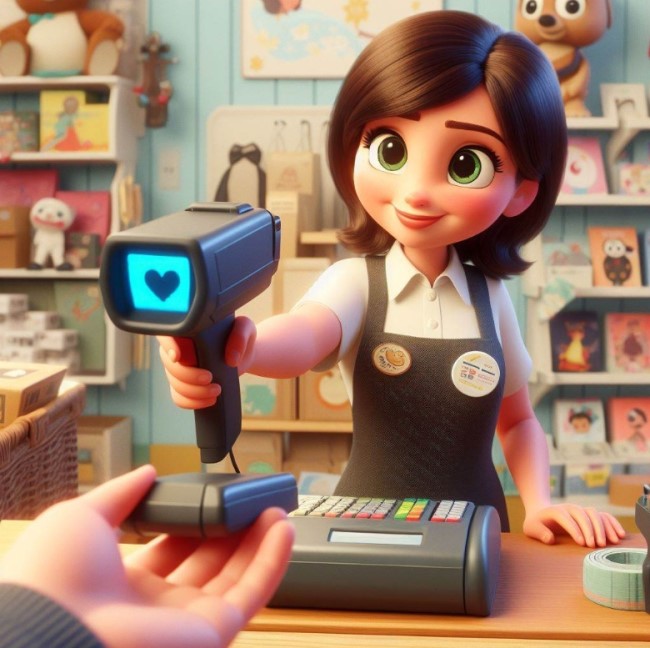Boost Checkout Speed & Customer Satisfaction: Long-Range Scanners
In today's high-speed retail world, conventional checkout processes are often slowed by the need to scan cumbersome items. That is where long-range retail scanners are the unique advantage for a small, physical business hoping to fire up its tasks and further develop client experience.
Why Long-Range Scanners Matter
Imagine a scenario where your cashier no longer needs to leave the register to scan items and struggle with heavy, cumbersome products. We say that the cost of one worker's comp case would be more than pay for a long-range scanner. Long-range scanners eliminate these pain points, offering several key advantages:
Increased Efficiency
By extending the scanning range, these scanners allow for quicker and more seamless checkout processes. No more awkward reaching or handling customers' mobile devices – point and scan from a distance.
Improve checkout speed
We all know that a long wait can be a deterrent for shoppers. So, we have found that long-range scanners have helped speed up transactions and reduce queue times, improving customer satisfaction.
Versatility
Whether dealing with large appliances, bulky furniture, or items tucked away on high shelves, long-range scanners have you covered. Their extended reach ensures no barcode is left unscanned.
Determining Your Scanner Requirements
Before investing in long-range scanners, assessing your specific needs is crucial. Here are some key considerations:
-
Location Assessment: Measure the distance from your checkout counter to the farthest potential barcode location. Add some extra to this measurement to account to give you some leeway and for future growth.
-
Environmental Factors: Evaluate your retail environment. Will the scanners be used indoors or outdoors? Are there obstacles like shelves or displays that could obstruct the scanning path? What are the lighting conditions like?
-
Barcode Types: You need to check what types of barcodes you have in your shop. Most will be 1D barcodes, but we are seeing more 2D codes coming in. I am sure you will see many more 2D barcodes in 10 years. Many of our clients using scales, need 2D barcodes now.
-
Scanner Technology: There are several popular scanner systems now, and in my experience, there is often little between them. We do tend to get a longer life out of the laser scanners, so all equal, I would go with a laser.
Weighing the Cost-Benefit Ratio
I would suggest if you need a new barcode scanner, make sure it is long-range as its extra cost is not that much. Its slightly higher cost will more than be made up by the potential time saved and the potential worker comp problems of people having to lift heavy objects. It will also have a positive impact on customer satisfaction.
Implementation and Integration
Proper implementation and integration are crucial once you've selected the suitable long-range scanners for your business. Invest in comprehensive employee training to ensure seamless adoption and optimal scanner usage. Additionally, consider the impact on your inventory management processes and plan for potential integration with other technologies like RFID or computer vision systems.
Future-Proofing Your Investment
A scanner will last a long time and over that time your scanning needs will change. When choosing long-range scanners, consider choices with flexible or stretched-out range capacities to confirm your shop in the future. This will ensure your scanners can adapt to any changes in your retail operations without needing immediate replacements.
Conclusion
In the retail scene today, people need to look for ways of upgrading their systems to improve their client experience. Long-range retail scanners offer a good method to speed up the checkout processes, further develop effectiveness, and make a more helpful shopping experience for your clients. Consider them to develop your retail shop.
If you want more information, we are here to help.



